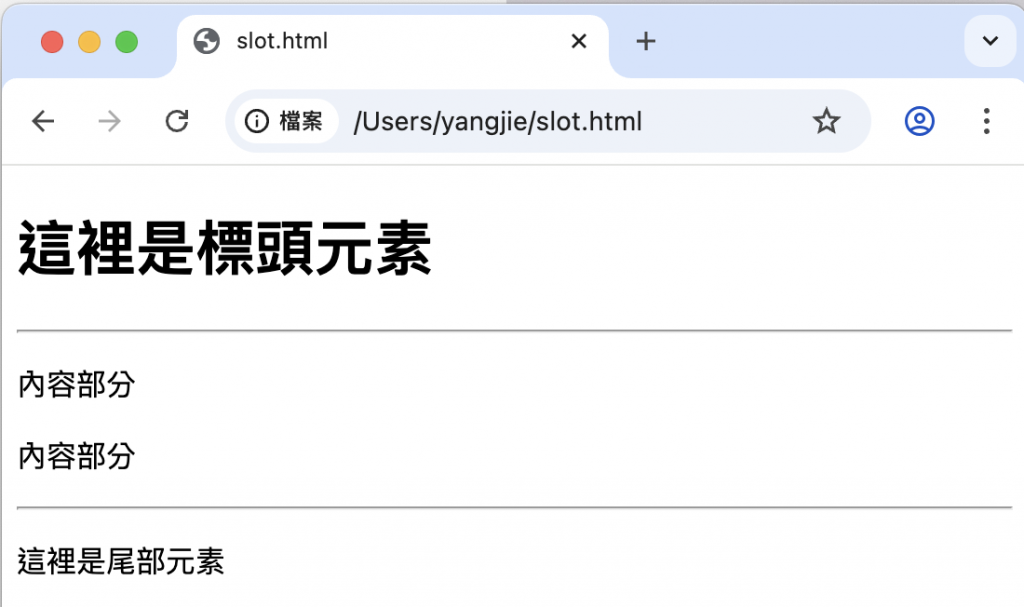自定義元件的插槽
多具名插槽的用法
- 具名插槽是指為插槽設定一個具體的名稱,在使用元件時,可以透過插槽名稱來設定插槽的內容。
- 由於具名插槽可以非常明確地指定插槽內容的位置,因此當一個元件要支援多個插槽時,通常需要使用具名插槽。
- 例如要撰寫一個容器元件,此元件由標頭元素、主元素和尾部元素組成,此元件就需要有3個插槽,具名插槽的用法範例如下:
<div id="Application">
<my-container2>
<template v-slot:header>
<h1>這裡是標頭元素</h1>
</template>
<template v-slot:main>
<p>內容部分</p>
<p>內容部分</p>
</template>
<template v-slot:footer>
<p>這裡是尾部元素</p>
</template>
</my-container2>
</div>
<script>
const App = Vue.createApp({
})
const container2Component = {
template:'<div><slot name="header"></slot><hr/><slot name="main"></slot><hr/><slot name="footer"></slot></div>'
}
App.component("my-container2", container2Component)
App.mount("#Application")
</script>
- 如以上程式所示,在元件內部定義slot插槽時,可以使用name屬性來為其設定具體的名稱,需要注意的是,在使用此元件時,要使用template標籤來包裝插槽內容,對於template標籤,透過v-slot來指定與其對應的插槽位置。
- 執行結果如下圖:


